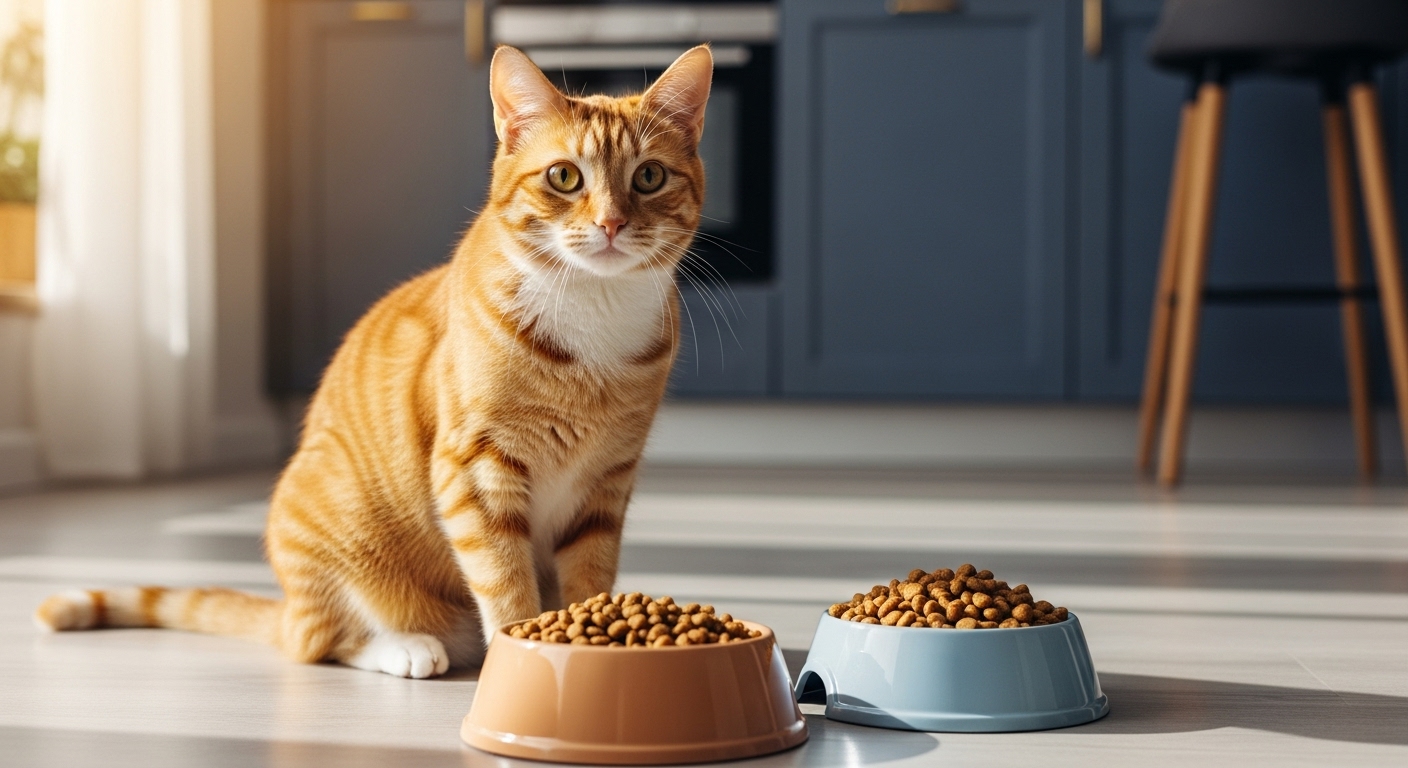Quick Answer: Is Dog Food Safe for Cats?
Dog food is not toxic to cats and won’t harm them if eaten occasionally in small amounts. However, dog food should never replace your cat’s regular meals. Only cat-specific diets can meet a cat’s special nutritional needs.
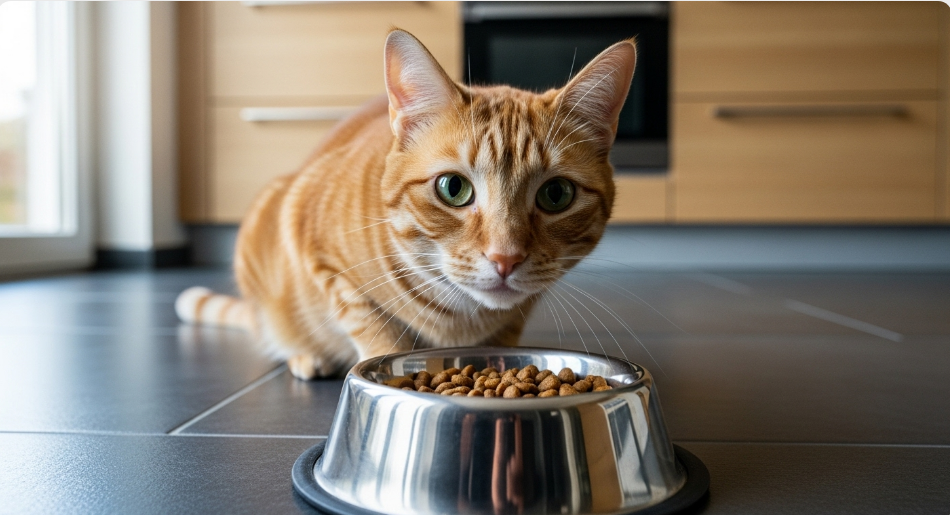
What Happens When Cats Eat Dog Food?
Short-Term Effects
In the short term, there are no real concerns if a cat eats dog food because it isn’t toxic to cats. Most cats will experience no immediate problems after eating small amounts of dog food.
However, some cats may show mild symptoms like:
- Upset stomach
- Loose stools
- Mild vomiting
- Temporary digestive discomfort
Long-Term Health Risks
Regular consumption of dog food poses serious health risks for cats. Dog food lacks several essential nutrients that cats cannot live without, including sufficient taurine and adequate vitamin A.
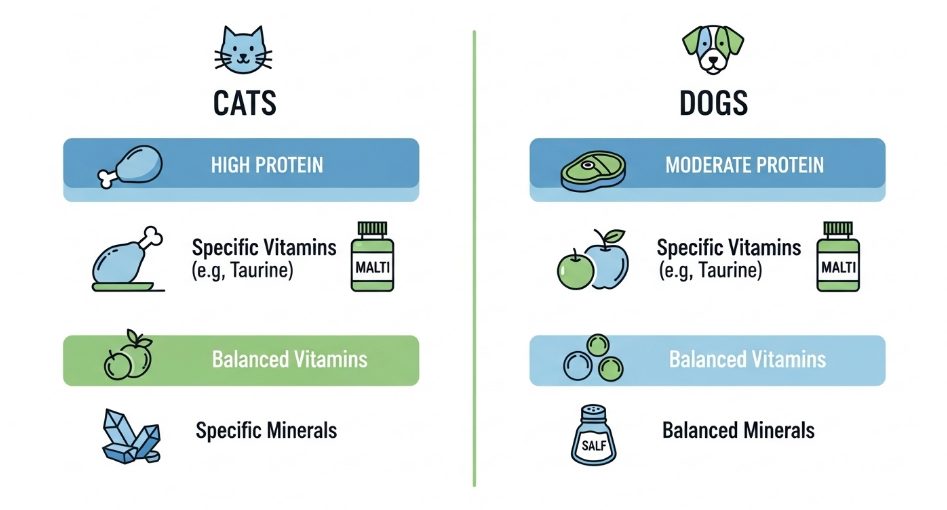
Why Can’t Cats Live on Dog Food?
Cats Are Obligate Carnivores
Cats have different dietary needs than dogs because they are obligate carnivores, while dogs are omnivores with more flexible diets. This fundamental difference shapes their entire nutritional requirements.
Critical Nutritional Differences
Taurine Requirements:
Without enough taurine, cats can develop potentially fatal heart disease (dilated cardiomyopathy) and progressive blindness. Dog food contains insufficient taurine levels for feline health.
Protein Needs:
Many vets recommend a diet that consists of at least 45-50% protein for adult cats. Dog food typically contains lower protein percentages.
Vitamin A:
Cats lacking proper vitamin A levels risk compromised immunity, deteriorating vision, and poor skin and coat health.
Other Essential Nutrients:
- Arachidonic acid (essential fatty acid)
- Niacin (vitamin B3)
- Higher fat content requirements
Emergency Situations: When Dog Food Might Be Acceptable
Temporary Feeding
In emergencies, it’s okay for cats to eat dog food temporarily, but monitor their health. Emergency situations might include:
- Running out of cat food late at night
- Natural disasters affecting pet food supply
- Traveling without proper cat food access
- Veterinary clinic boarding situations
Guidelines for Emergency Feeding
- Keep it brief: Never exceed 2-3 days
- Monitor closely: Watch for digestive upset
- Add supplements: Consider taurine supplementation if available
- Resume normal diet: Return to cat food as soon as possible
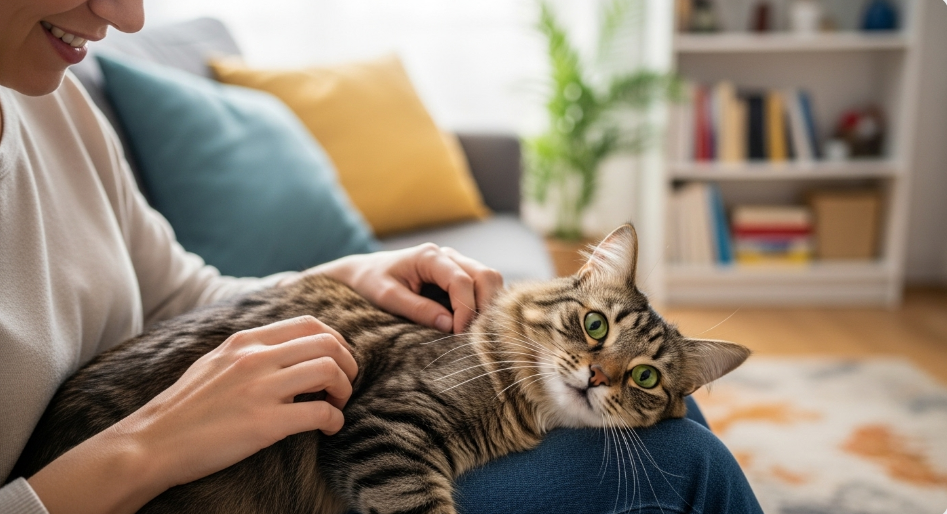
How to Prevent Cats from Eating Dog Food
Feeding Strategies
Separate Feeding Areas:
- Feed pets in different rooms
- Use pet gates to create boundaries
- Establish specific feeding times
Elevated Feeding:
- Place dog food on elevated surfaces
- Use feeding stands appropriate for each pet’s height
- Consider automatic feeders with timers
Scheduled Meals:
- Avoid free-feeding both pets
- Monitor meal times closely
- Remove bowls after feeding
What to Do If Your Cat Ate Dog Food
Immediate Steps
- Don’t panic: Small amounts are generally safe
- Remove access: Put away remaining dog food
- Observe behavior: Watch for unusual symptoms
- Provide fresh water: Ensure proper hydration
When to Contact Your Vet
Call your veterinarian if you notice:
- Persistent vomiting or diarrhea
- Loss of appetite lasting more than 24 hours
- Lethargy or unusual behavior
- Signs of dehydration
Choosing the Right Food for Your Pets
Quality Cat Food Features
Look for cat foods that contain:
- High-quality animal protein as the first ingredient
- Adequate taurine levels (minimum 0.1% dry matter)
- Balanced vitamin and mineral profiles
- AAFCO nutritional adequacy statement
Multi-Pet Household Solutions
Separate Brands: Choose distinct flavors and textures to reduce cross-interest
Feeding Schedules: Implement structured meal times for both pets
Training: Teach pets to eat only from their designated bowls
Common Myths About Cat and Dog Food
Myth 1: “Premium dog food is fine for cats”
Reality: Even high-quality dog food lacks essential feline nutrients
Myth 2: “A little dog food won’t hurt”
Reality: While occasional consumption is safe, regular feeding is harmful
Myth 3: “Cats can adapt to any diet”
Reality: Cats have evolved specific nutritional requirements that cannot be compromised
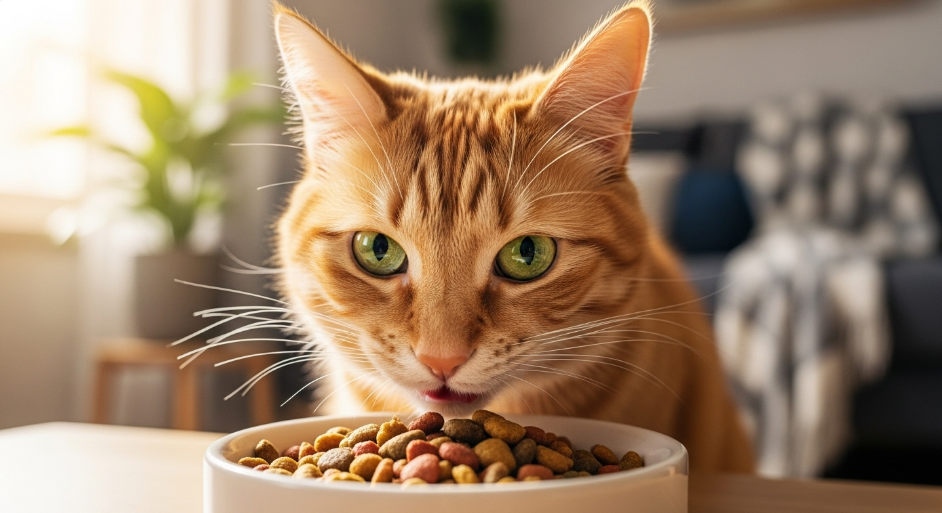
Conclusion
While dog food is not harmful or poisonous for cats, it should never become the default meal. Understanding the nutritional differences between cat and dog food helps you make informed decisions about your pet’s health.
Remember to keep your cat on a diet specifically formulated for feline needs. If you have multiple pets, create separate feeding routines to ensure each animal receives proper nutrition. When in doubt, consult your veterinarian for personalized feeding advice.
For more information about what cats can safely eat, check out our guides on whether cats can eat peanut butter and if cats can eat bananas. You might also find our article about what catnip does to cats helpful for understanding your feline’s behavior.
Read more:
